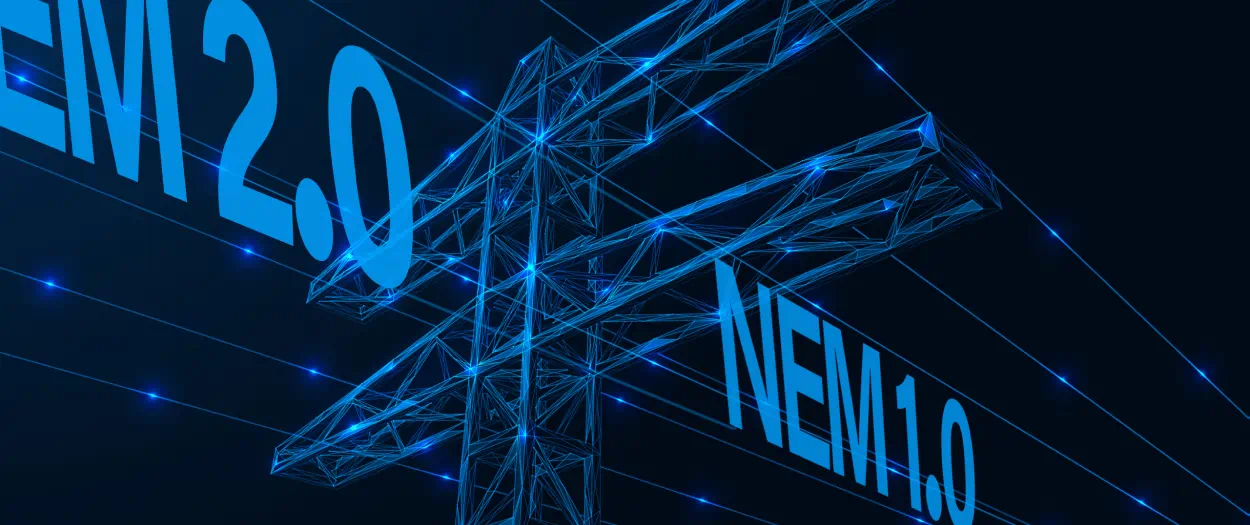Are you a proud solar owner in the Bay Area, California, benefiting from the Net Energy Metering (NEM) 1.0 rate plan with PG&E? If so, you may have heard about the transition to NEM 2.0 and now NEM 3.0. Understanding these changes is crucial to make informed decisions about your solar investment. We’ll delve into the details of each NEM plan and explain how customers under NEM 1.0 may lose money when transitioning to a Time-of-Use (TOU) electricity plan.
Net Energy Metering 1.0, introduced in California in the early 2000s, revolutionized the solar industry by allowing solar owners to offset their electricity bills. Under NEM 1.0, solar customers received full retail credit for every excess kilowatt-hour (kWh) of electricity their system produced, which was exported back to the grid. This meant that customers could offset their nighttime and high-demand usage by receiving credits during the day when solar production was at its peak.
PG&E phased out NEM 1.0 and NEM 2.0 because it became too expensive for the company. As more and more people install solar panels, the amount of solar energy being exported to the grid is increasing. This is putting a strain on PG&E’s infrastructure, and the company is losing money.
| Feature | NEM 1.0 | NEM 2.0 | NEM 3.0 |
| Retail Credit | Full retail credit | Reduced retail credit (retail credit less non-bypassable charges) | Significantly reduced (close to wholesale) credits that vary every hour |
| True-Up Period | Annual | Annual | Annual |
| TOU Rates | Flat rates & TOU | Mandatory TOU rates | Mandatory TOU rates |
| Grandfathering | 20-year grandfathering | 20-year grandfathering | 15-year grandfathering |
The Impact of Transitioning to a TOU Electricity Plan:
One of the major changes with NEM 2.0 and NEM 3.0 is the transition to Time-of-Use (TOU) rates. Under these plans, electricity prices vary based on the time of day, with higher rates during peak demand hours. This change can have significant implications for customers who were previously on NEM 1.0, as they could lose out on potential savings. Want to know more about NEM 2.0 and NEM 3.0? Checkout our leatest blog – NEM 3.0 vs. NEM 2.0
Solar owners under NEM 1.0 were accustomed to offsetting their high-demand usage during peak hours by exporting excess energy back to the grid and receiving full retail credit. However, with TOU rates, the excess energy exported during the day may receive reduced retail credit, and the higher rates during peak hours could erode potential savings. This means that customers might end up paying more for their electricity consumption, even though they have solar panels on their roofs.
Consider the below snapshot from PG&E website of a customer who was in NEM 1.0 and transitioned from EVA to EV2A plan in 2023. The customer received a credit of $176.67 for exporting 178KWh to the grid, at almost $1/KWh, in 2022. However, after transitioning to a time of use rate plan, the customer received a lesser credit of only $116.17 at $0.36/KWh, despite exporting almost double the amount of electricity exported last year. That is a loss of value of about 64%!
How to reduce your loss under time of use rate plan?
PG&E is making newer electricity plans more solar unfriendly that causes homeowners to lose money on their solar systems as they are increasing the definition of peak hours and increasing peak rates and reducing non-peak rates. Adding a solar battery storage system to your solar setup can significantly mitigate the potential loss associated with transitioning to a time of use rate plan. By storing excess energy generated during peak sunlight hours, batteries allow you to utilize that energy during the evenings when the TOU rates are higher. This means you can reduce your reliance on grid electricity during expensive peak hours and maximize your self-consumption of solar energy.
With a battery, you can effectively shift your energy usage to times when rates are lower, ensuring you make the most of your solar investment and minimize the impact of the time of use rates on your electricity bills. By adding storage to the solar system for the above customer, Nabu helped reduce the impact of time of use rate plan from 64% to about 20%. Moreover, battery systems provide backup power during grid outages, enhancing your energy resilience and peace of mind.
At Nabu Energy, we are dedicated to helping our customers navigate these changes and make informed decisions. We recommend exploring options such as adding energy storage to maximize self-consumption during peak hours and considering the timing of heavy energy-consuming activities. By doing so, solar owners can adapt to the new net metering policies and continue reaping the rewards of their solar investment. Remember, staying informed and seeking guidance from solar experts is the key to maintaining a cost-effective and environmentally friendly energy solution.

